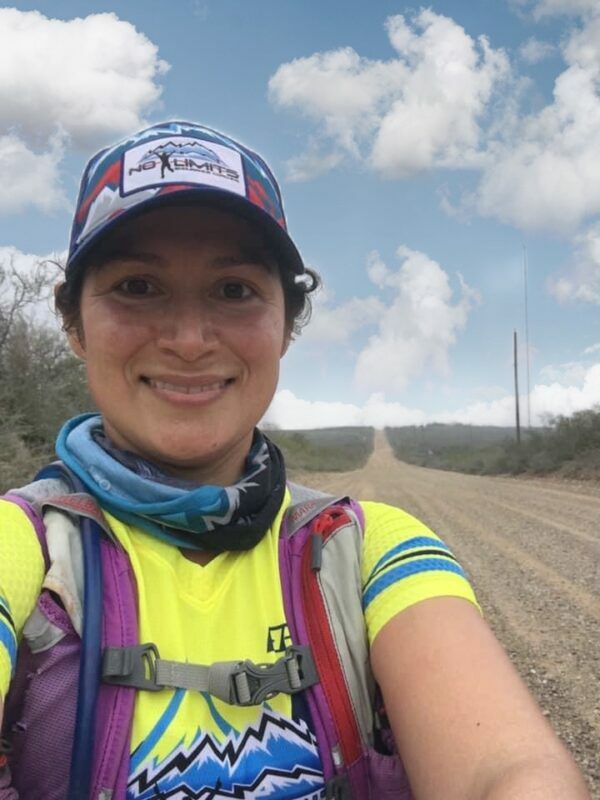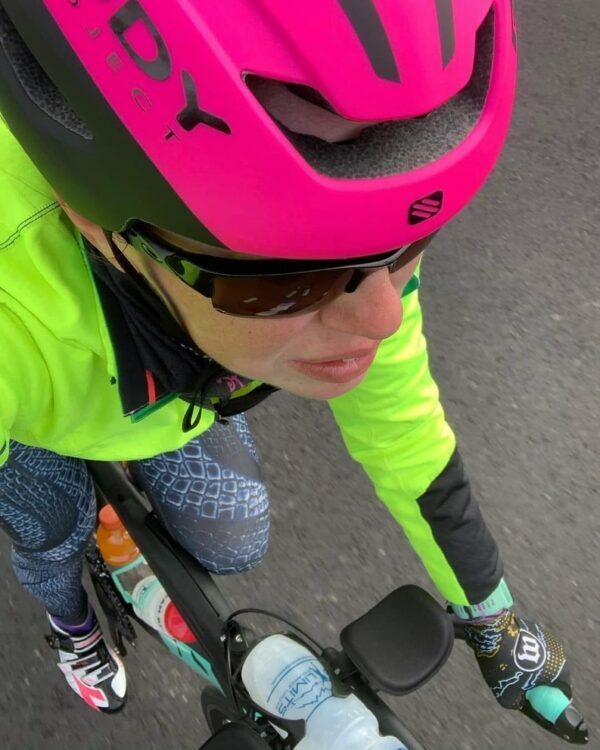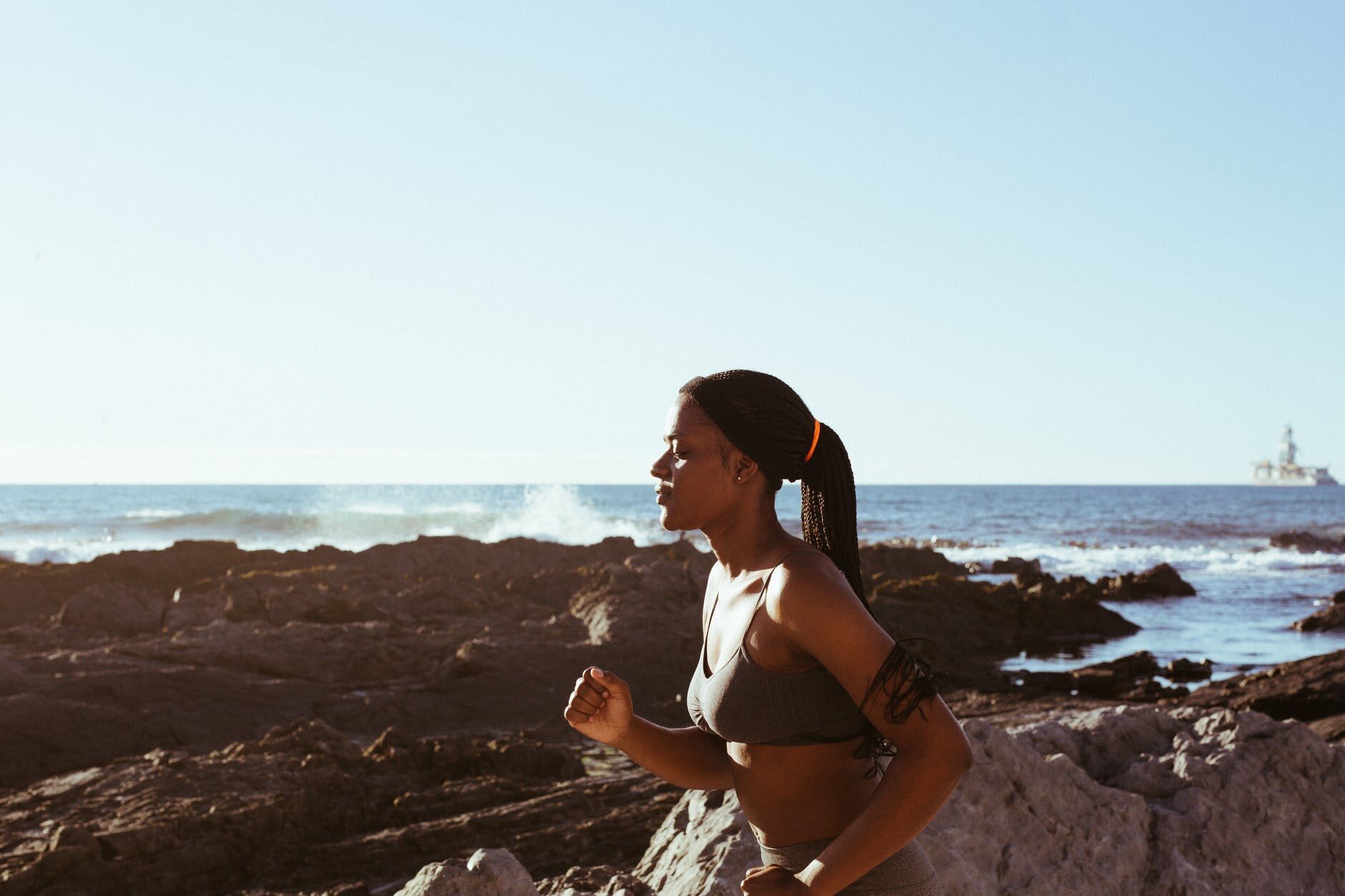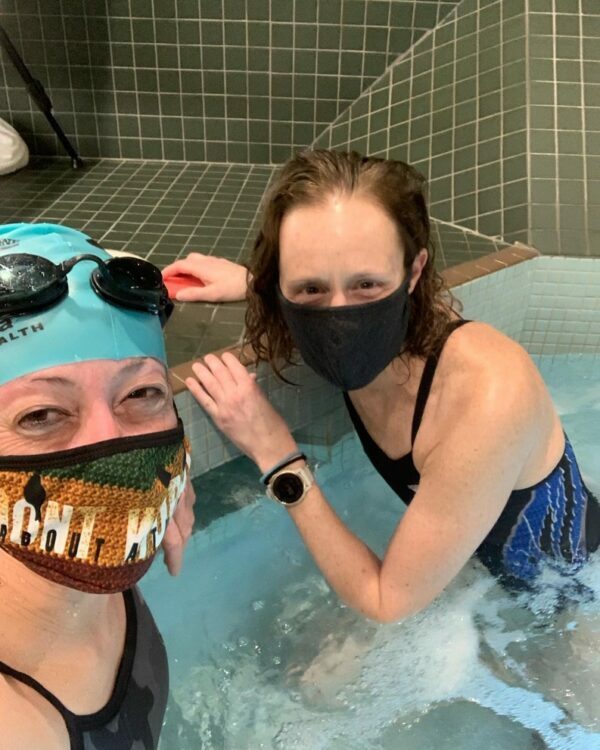by Coach Maria Simone
A training camp is a great way to put in focused training, without the worries and bustle of everyday life getting in the way. Long days of training, followed by great food and recovery support our growth as athletes.

In the winter months, some lucky endurance sport enthusiasts may take time out for a training camp in warmer climates: Arizona, Florida, Southern Texas, to name a few of the popular spots. These training camps come complete with experienced coaches, professional triathletes, and a group of like-minded comrades, willing to work their bodies for anywhere from a few days to a week (or more!).
As the weather warms in other locales, athletes flock to some of the most iconic race destinations to train on parts of the race course, such as courses for Western States, Ironman Lake Placid, Leadville 100, and the like.
Sounds great, right?
Sure, but then you look at the price tag of the camp (without even paying to get there), or you realize the timing of the camp doesn’t fit with your life, or maybe the intimidation factor of a camp is too much, or maybe you just like to train solo. Regardless of the reason, a group training camp may not work for you.
That doesn’t mean that you can’t still have a training camp – you just need to improvise.
Through the years, I’ve kicked my own arse for a week in a variety of different types of do-it-yourself style training camps.
No, there weren’t fancy coaches. Just me.
No, there wasn’t a big group of athletes pushing each other day in, day out. Again, just me and the space between my ears.
What there WAS in my DIY camps: a fantastic week of training, without the need to balance life, work and everything else.
So, if you need to host your own DIY camp – without the fuss and cost, here are my top tips for making it a success.
1. Know your purpose
Generally speaking, a training camp sets out a week of training overload that will push you in the ways you need to be pushed, so that you will be stronger and faster in the weeks to come.
A training camp isn’t about knocking down random high volume or high intensity training and hoping you get results. A training camp should incorporate a systematic, planned training load, designed to bring about specific training adaptations–that you feel will be key to your improved performance for the coming season. These adaptations might be related to endurance, strength, power, speed, muscular endurance – or a combination of all of these things – depending on your unique needs. (For more information about training purposes & goals, click here.)
For those of you who have coaches, talk with your coach about the purpose and goals for this type of camp, the types of training that would be beneficial, and the role (if any) that a focused week of training could have for your future performance.
For example, one DIY camp I did in 2016 to prepare for a Double Anvil, had the following focus:
- Improve my muscular endurance and strength–particularly for the bike. This was the primary purpose for the week.
- Get some outside riding time in a warmer climate –for fun and to practice u-turns, as the 37 laps of the double bike course will have a u-turn at one end (yes, 37 laps of a 6ish mile course). Inefficiency at that end 37 times over could prove to add up plenty of costly-minutes.
- Conduct course recon so I know how to structure the remaining race-specific phase of my training

2. Consider the timing
The timing of your camp needs to consider two basic elements: 1) your life, and 2) your ATP (athlete training planner), which is a big-picture overview of your training for the year (and sometimes multiple years).
In terms of your life: When can you set aside 3-7 days for focused training? Think about work, family, vacations, etc. Do not confuse a training camp with a fun family vacation – those things work at cross-purposes and simply won’t mix well.
When it comes to your ATP, you want to think about when your racing season begins, as well as the type of training you’ll be doing and the effects you want it to have for future training and racing. Again, if you have a coach, this should be discussed with her/him, as s/he will know when a focused training week will work for your training.
3. Organize Your Training Camp
In addition to ensuring that your workouts are organized with purpose, you also want to make sure that you organize how you will execute those workouts. If you are traveling to a new location, scope out routes, figure out how you’ll refuel and restock in the middle of long workouts, and other similar logistics that will ensure smooth training throughout the week.

4. Cost Savings
A DIY camp will definitely save you money in terms of the costs associated with a traditional training camp – which can be anywhere from a few hundred to a few thousand dollars (depending on the coaching staff, the amenities and the like).
However, traveling to a warm locale for your DIY adventure still incurs costs. Even so, there are ways to cut costs, if you want to travel for better weather or to do course-specific recon.
Do you have friends you’ve been meaning to visit? Perhaps they won’t mind hosting you for this camp–and they won’t mind that you’ll be gone most of the day training, and a tired huddled heap by the end of the day. When I did a training camp in Florida, my friend Patti, who lives in St. Pete, Florida, put me up for the week. She not only didn’t mind, she cooked my meals, made me kale smoothies, did my laundry, had fancy french press coffee ready for me, and kept me company on more than a few training sessions. (Patti is also the friend who was willing to help me change out of my bike shorts during T2 at both of the doubles I raced. Yeah, she’s a super awesome friend. I wish for everyone that they could have a friend like Patti.)
And beyond cost saving, it was great to be able to control my food intake while away, as I was able to eat healthy, home-cooked meals to support my training. As a vegetarian, it can get tricky and unhealthy to eat out when there are limited veg options available.
Other cost saving tips: since you don’t have specific dates for a particular group camp, you can be more flexible with travel dates. Flying on “off” days can lower costs significantly. In my case, I was able to book a flight on Spirit Airlines for just $88 round trip! Of course, I had to pay for my bag, and my bike, but even with those costs, my flight costs stayed under $300 (the bike box fee was the most expensive part!).
If you are lucky enough to live within driving distance of warmer climes, then that is the way to travel in terms of cost-saving.
Of course, you don’t have to travel! You can do a stay-cation style training camp – maybe selecting routes or terrain that you normally can’t get to in the hustle and bustle of every day life.
5. Push Yourself Outside of Your Comfort Zone–And Stay Positive!
A training camp is time do hard work — both mental and physical.
This camp is a good opportunity to simulate the solo nature of racing, to become more self-sufficient, and to work the space between your ears. Ensure that there are workouts that will bring you to your edges – and be willing to go to those edges. Now, “going to your edges” does not only mean hard, threshold workouts. The definition of your edges or your limits will vary based on the kind of athlete you are.
For some of you, this may mean gaining valuable experience climbing and descending hills. For others, this may mean learning to pace yourself across longer distance swims, rides and runs, or handling the sometimes monotonous experience of a long ride that doesn’t seem to end. And, for others, getting out of your comfort zone may mean building in some threshold work (especially for endurance monsters like me who will gladly run 50 miles before racing a 5k).
Of course, when it comes to hard workouts, you need to be mindful of how you organize the week, as you can’t beat your body to a pulp every single day. The overall week still requires balance in terms of volume and intensity so you don’t break yourself.

6. Post Training Camp Recovery Period
MOST IMPORTANTLY: because a training camp will be a dose of training overload, you MUST plan for adequate recovery. The week after your training camp should not be another series of hard or long workouts, a race, stressful work days, or anything else that’s going to prevent your body from fully absorbing the work you put in over the week.
If you do not permit proper recovery from this camp, you will move from a state of functional overreaching–which is good, and from which you can recover in a few days to a week, to a potential state of nonfunctional overreaching–which will impede performance and can be potentially dangerous.
Remember: fitness gains materialize after proper recovery. Training breaks your body down – and continuing to break the body down will eventually lead to a state of overtraining. So, proper recovery protocols MUST be implemented–both during and after the camp. These include (but are not limited to):
- Eating clean (whole, nutrient-dense foods)
- Proper hydration
- Sleep
- Myofascial release (deep tissue massage, foam rolling, ART-active release technique)
- Chiropractic care (from a practitioner who understands athletes – I think this is KEY)
- Active recovery day (e.g., easy walk)
- Full rest day
- Reduced training load for 5-10 days (post big blocks of training, such as a training camp)–as measured by training stress, and not just volume or intensity – but the combination of those factors
With these tips in mind, you can create a structured training camp that fits your life, your goals and your budget! Happy Training!
